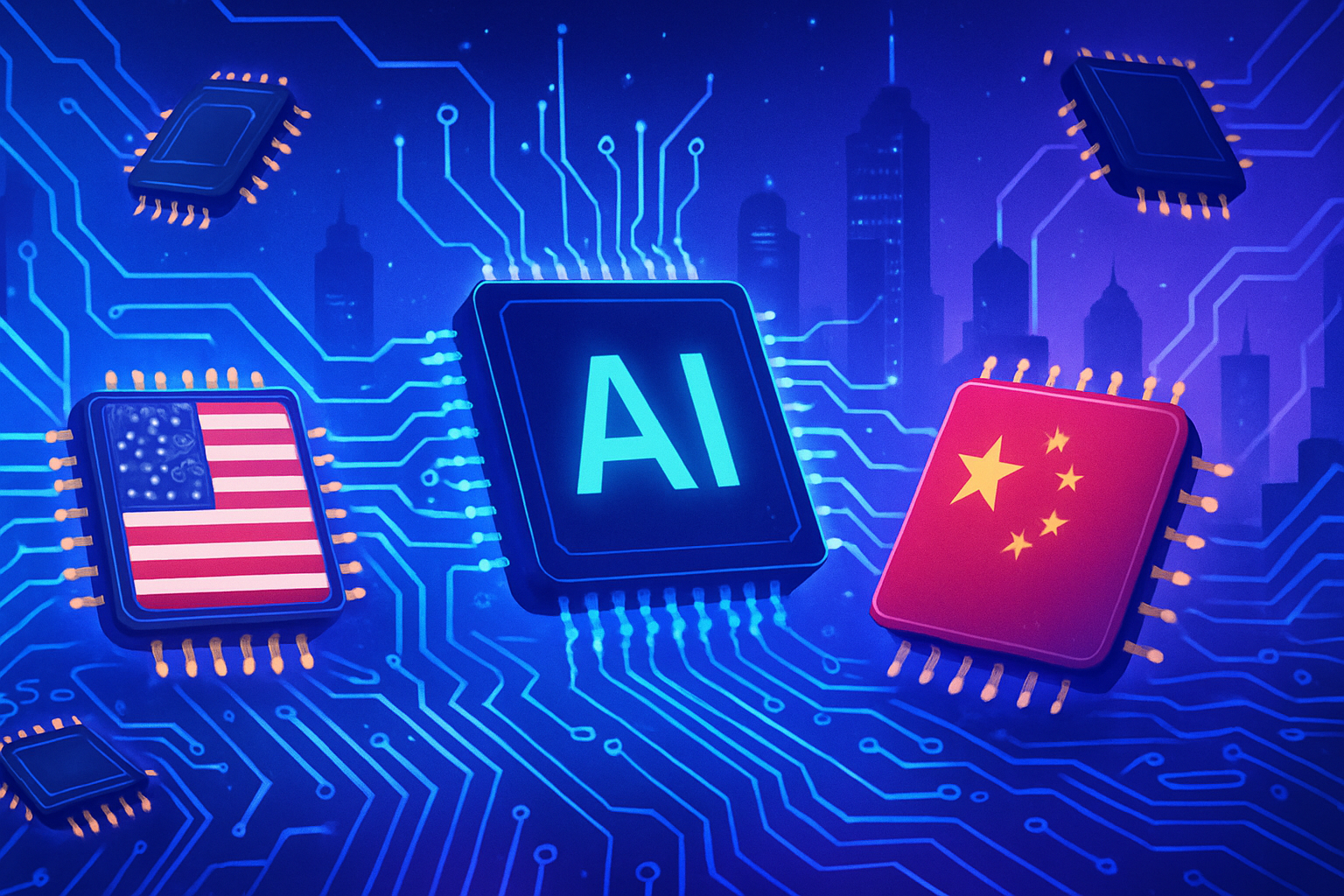The global geopolitical architecture is being reshaped with the rapid rise of artificial intelligence, provoking heightened tensions between dominant powers. *The United States and China are vigorously clashing* to secure leadership in the crucial battle over semiconductors. Faced with the need to control technologies deemed strategic, Washington is intensifying its restrictions, thereby threatening Beijing’s rise. *The control of electronic chips is becoming a central issue* in technological rivalry, with incessant political twists, the repercussions of which will be significant for global balance.
The evolution of tensions in the semiconductor market
Recent decisions by Washington regarding the use of Chinese chips have clearly exacerbated friction between the United States and China. Following an agreement on tariffs, the American administration opted for a tightening of regulations. This strategic turnaround occurs in a context where the battle for dominance in artificial intelligence (AI) is increasingly palpable.
American measures: an offensive against Chinese technology
On May 13, the American administration, led by Donald Trump’s government, revealed a new directive. This decision aims to curb Chinese development of electronic chips, a sector that Washington considers crucial in the race for AI. American authorities assert that the latest chips from the giant Huawei, the Ascend 910, are developed using American technologies, potentially incorporating sensitive security mechanisms.
The Chinese reaction: a context of resentment and accusations
China’s response has been swift and cautious. Wang Yi, the foreign minister, denounced what he sees as a blockade and unilateralism. Beyond official statements, Beijing views these measures as an infringement of the consensus reached during discussions in Geneva. The hope for constructive dialogue between the two powers is dwindling, giving way to increasing mistrust.
The implications for technological innovation
This hardening of relations has significant ramifications for the global ecosystem of technological innovation. Companies, both American and Chinese, must navigate an uncertain environment where regulations evolve rapidly. The current tensions weaken cooperation, which is essential for progress in the field of AI and semiconductor technology.
The strategic stakes on a global level
The competition between the United States and China in AI could lead to a true geopolitical battle for technological supremacy. American authorities and their Chinese counterparts are investing heavily in research and development, seeking to outpace their adversary. These efforts intensify not only commercial competition but also strategic rivalry at the international level.
Future prospects
Advancements in AI can no longer be dissociated from the issue of semiconductors. As both nations continue to erect barriers, the international community fears a technological decoupling. Every decision made by these powers could shape a new economic and military landscape, with unpredictable consequences.
To follow developments in this rapidly evolving sector, it is essential to monitor American and Chinese initiatives. Experts agree that the next stage in this technological struggle will determine not only the future of trade but also the overall architecture of security.
It is essential to stay informed about news related to this topic, as these tensions will continue to shape the world in the years to come.
FAQ on The Rise of Artificial Intelligence: Growing Tensions between the United States and China in the Semiconductor Battle
What are the main reasons for the tensions between the United States and China regarding semiconductors?
The tensions are primarily driven by the struggle for technological dominance, the protection of economic interests, and national security concerns related to the use of advanced technologies, particularly in the field of artificial intelligence.
How is the U.S. government trying to curb the development of the semiconductor industry in China?
Washington has implemented restrictions on the export of technologies and electronic chips to China, particularly targeting Chinese companies like Huawei, to limit their ability to access critical technologies.
What impact do these tensions have on the AI market?
The tensions exacerbate market uncertainty, potentially slowing international collaborations and affecting investments in AI research and development, both in the United States and China.
Why are electronic chips crucial for the race in artificial intelligence?
Electronic chips are essential because they power the data processing capabilities of artificial intelligence systems, enabling the rapid and efficient functioning of machine learning algorithms.
What could be the long-term impacts of a prolonged conflict between the United States and China on technological innovation?
A prolonged conflict could lead to a slowdown in technological innovation resulting in fragmentation of supply chains, barriers to the exchange of knowledge, and a distrustful race in scientific collaborations.
What are the consequences for American companies operating in China?
These companies may face regulatory uncertainties, financial losses due to import/export restrictions, as well as an increased need to adapt their strategies to navigate a hostile business environment.
How is China reacting to U.S. pressure on the semiconductor sector?
China is looking to strengthen its own semiconductor industry through increased investments and governmental initiatives, while denouncing U.S. actions as attempts at economic intimidation.
What types of regulations has Washington put in place regarding Chinese chips?
Washington has imposed guidelines that prohibit the use of certain Chinese chips such as those from Huawei, establishing strict export controls on technologies deemed sensitive.
What alternatives do companies have in response to the semiconductor shortage caused by these tensions?
Companies can turn to other suppliers, diversify their supply chains, invest in alternative technological solutions, or encourage internal research and development to reduce their dependence on Chinese semiconductors.
Do these tensions also affect consumers?
Yes, the tensions can lead to increased prices for technological products, limited availability in the market, and potentially delayed access to new innovations in artificial intelligence and technology in general.






